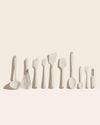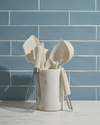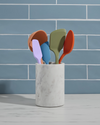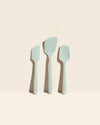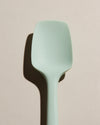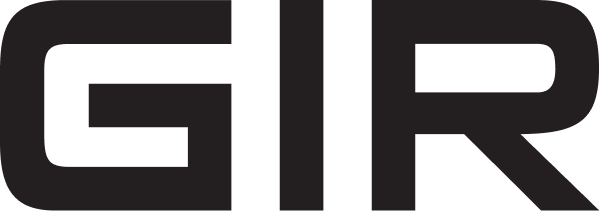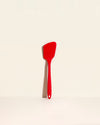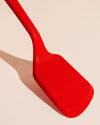Products
13 Tips On How To Organize Kitchen Cabinets
Published
September 04, 2024
Reviewed by
Suze Dowling

Organizing your kitchen cabinets may seem daunting, especially if you have a small kitchen space or an abundance of kitchen items. However, a well-organized kitchen can transform your cooking and dining experience, making it easier to find what you need and keeping your countertops clutter-free.
This article will provide you with practical and effective organizing tips, with a focus on maximizing kitchen storage, ensuring easy access to your items, and maintaining a neat and tidy kitchen area.
Whether you're setting up a new kitchen or revamping your existing one, these tips will come in handy.
What To Know About Decluttering
Before you can truly organize your kitchen cabinets, it's essential to declutter. So, before diving into the organization process, we’ll look at this crucial step that often gets overlooked. Taking the time to declutter will help you make the most of your storage space and focus on the items that truly matter.
Decluttering is about letting go of the unnecessary items that have been taking up valuable space and creating a more streamlined, efficient kitchen. It sets the stage for effective organization, helping you make the most of your storage space and focus on what's truly important.
Decluttering your kitchen cabinets also offers these benefits:
- Efficiency: With fewer items in your cabinets, it's easier to find what you need quickly. Let’s face it — looking for things can be frustrating.
- Reduced stress: A cluttered kitchen can make cooking a stressful task. By decluttering, you create a more organized, peaceful environment.
- Cost-saving: Decluttering helps you take stock of what you already have, reducing the chances of buying duplicate items.
How To Start Decluttering
So, how do you start this decluttering process? Let's dive into the steps.
Identify Items for Removal
The first step in decluttering is identifying items that you no longer need or use. This could be expired food items, duplicate kitchen tools, or appliances you haven't used in a long time. Be honest with yourself about what you really need in your kitchen.
Sort Items
Once you've identified items for removal, sort them into categories. You might have items that can be thrown away, items that can be donated, and items that can be sold.
Remove Items
Next, remove these items from your kitchen. Throw away or recycle anything that is broken or no longer usable. Donate or sell items that are still in good condition but no longer serve you.
Clean Your Cabinets
With the unnecessary items out of the way, seize the opportunity to clean your cabinets thoroughly. Wipe down the inside of the cabinets, clean the shelves, and make sure they are ready to house your kitchen items.
Once you've decluttered, you'll have a clearer idea of the items you need to organize, and you'll be ready to start the kitchen cabinet organization process. Remember, decluttering isn’t a one-and-done task. Regularly reviewing your items and removing unnecessary ones will help maintain your kitchen organization in the long run.
What Are the Basics of Kitchen Cabinet Organization?
Kitchen cabinet organization helps you create a system that makes your kitchen work efficiently for you.
Kitchen cabinet organization involves arranging your kitchen items in a way that makes them easily accessible and easy to find and reduces the time spent looking for things. It's about making the best use of your cabinet space and finding storage solutions that suit your unique kitchen layout and your cooking habits.
A well-organized kitchen cabinet can streamline your cooking process, make it easier to keep track of your grocery needs, and ultimately save you time and energy. It also plays a crucial role in maintaining a clean and decluttered kitchen, as it helps to keep your countertops free of unnecessary items.
The benefits of kitchen cabinet organization extend beyond the functional. A tidy kitchen is a welcoming kitchen, one that invites you to cook more often and enjoy the process. It can also contribute to a sense of calm and order in your home, reducing stress and making your living space more enjoyable.
In the following sections, we'll explore several practical tips and organizing hacks that can help you achieve well-organized kitchen cabinets, from using labels and spice racks to considering a Lazy Susan or corralling your most-used kitchen tools in one place. Whether you're a DIY enthusiast or prefer ready-made solutions from stores like Amazon or IKEA, there's something for everyone.
How To Organize Kitchen Cabinets
Now that we’ve covered some of the basics and talked about how to set yourself up for success, here are our top tips for organizing your cabinets.
1. Plan
When it comes to organizing your kitchen cabinets, a one-size-fits-all approach doesn't always work.
The key to creating a truly efficient kitchen is to tailor your organization strategy to your unique lifestyle and cooking habits. This involves careful planning and thoughtful grouping of items based on how and when you use them.
2. Understand Your Kitchen Habits
Start by observing your daily kitchen routines. What items do you use most frequently? What tasks do you perform every day? Understanding your habits can help you make decisions about where to store items for maximum convenience.
For instance, if you mix salad dressing every evening for dinner, it might make sense to place the basil and oregano near the oil and vinegar instead of in the spice rack. This kind of storage may go against the broader categorization, but it streamlines the process of preparing the vinaigrette.
3. Group Items for Efficiency
Grouping items based on their use can significantly improve your kitchen efficiency. This means storing items that are used together in the same place.
Consider your morning routine. If you use sugar in your coffee every morning or honey in your tea, keeping the sugar and honey in the same cabinet as your coffee mugs and teacups can streamline your daily routine.
Although you might have decided that all food items will go into your pantry instead of other kitchen cabinets, making an exception in this case makes practical sense.
4. Bring Out the Label Maker
One of the simplest and most effective ways to organize your kitchen cabinets is by using labels. You may be thinking, “Well, it’s my kitchen and I know where everything goes.” But unless you live alone, labels can ensure that young children who are working on chores, helpful hubbies, and gracious dinner party guests can all help put things back where they belong.
Labels are particularly useful for organizing small items in your kitchen drawers, such as silverware or condiments. They can also help you quickly identify contents in food storage containers or Tupperware. This is a great DIY project that you can personalize according to your needs.
5. Add a Spice Rack
A spice rack can be a game-changer in your kitchen organization. By dedicating a specific space for your spices, you can easily find what you need when you're cooking. This is also an excellent solution for small kitchens, as many spice racks are designed to fit in narrow spaces or can be hung on the wall or inside a cabinet door.
6. Consider a Lazy Susan
A Lazy Susan can be a lifesaver in lower or corner cabinets, making it easy to access items without having to reach far into the back of the cabinet. This rotating tray can keep your items in sight and within easy reach, making the most of your cabinet space, especially when it comes to pantry organization. It's particularly useful for storing items like oil, vinegar, or other condiments that you use frequently.
7. Adjust the Shelves
Adjusting the shelves in your cabinets can help you make the best use of your storage space. This is especially useful in upper cabinets where you may have taller items to store, like mixing bowls.
Take note of the tallest wine glass or how high your stack of plates is. You might find that you still have five or six inches of wasted space above your plates. If so, adjust the shelf above them so it fits more snugly, giving you extra room for taller items on the next shelf.
Adjusting the shelves to fit your items can prevent wasted space and make your storage work for you better.
8. Use Shelf Risers
If some of your cabinets have fixed shelves that cannot be adjusted, then shelf risers can be a lifesaver by not letting that vertical space go unused! These can be particularly helpful for storing plates, bowls, or glasses.
Stackable options are also available that let you customize your storage space per cabinet and the items that live in it.
9. Install Slide-Out Baskets or Bins
Pull-out baskets or bins can make all the difference in those deep bottom cabinets. These storage solutions make it easier to access the items at the back of your cabinets without having to reach in or remove other items just to see what’s back there. They're especially helpful for storing pots and pans or larger pantry goods.
10. Put Vertical Space to Good Use
If your kitchen has a narrow cabinet or two, you can maximize its storage potential by using it to store things like cutting boards, cookie sheets, and platters upright, saving you a lot of space. This can be done with dividers or special organizers that section the space vertically.
There are also a number of DIY hacks available online that you can use to create your own upright storage solutions.
11. Take Advantage of Over-the-Door Storage
Don't forget about the potential extra storage on the back of your cabinet doors. Over-the-door storage solutions are perfect for larger cabinets and can be used to stow a variety of items, from cleaning supplies to sponges or even waxed paper, aluminum foil, and cling wrap.
These solutions can help you make the most of every inch of your cabinet space.
12. Use Pot Lid Organizers
Pot lid organizers can help you keep your kitchen cabinets tidy and your pot lids easy to find. They can be stored inside your cabinets or even on the inside of your cabinet doors, depending on the design of the organizer. You can find a variety of pot lid organizers on Amazon or at IKEA.
13. Switch to Uniform Containers for Dry Pantry Goods
You’ll often notice home organization pros using uniform containers for dry pantry goods like flour, sugar, or pasta. They can help you keep your pantry organized and make it easier to see when you're running low on ingredients. These containers can also keep your food fresh longer.
Decanting your dry goods into uniform containers helps you plan and maintain your pantry’s organization since you won’t have to accommodate random taller or shorter boxes and containers. Although there’s an initial investment in buying the containers, it will create an overall pleasing aesthetic.
How To Maintain Your Organized Kitchen Cabinets
Once you've organized your kitchen cabinets, maintaining that organization is key to keeping your kitchen functioning smoothly.
Here are a few tips to help you sustain your newly organized space:
- Regularly declutter: Go through your kitchen items periodically and get rid of anything you don't use or that has expired. This will help prevent clutter from building up again.
- Follow a system: Stick to the organization system you've set up. If you've labeled your containers or shelves, make sure to put things back in their designated places after use.
- Optimize as needed: Your kitchen needs may change over time, as may the items you store in your cabinets. Don't be afraid to adjust your organization system as needed. This could mean adding new storage solutions, adjusting your shelves, or reorganizing certain areas.
- Clean regularly: Keeping your cabinets clean can help maintain the overall organization. Wipe down shelves, organizers, and the inside of your cabinets regularly to keep them fresh and tidy.
The Takeaway
Organizing your kitchen cabinets can greatly enhance your cooking experience, making it easier to find what you need and keep your kitchen tidy. Remember, though, the goal of organizing your kitchen cabinets is to make your life easier, not to follow strict rules. It's okay to make exceptions to general organizing principles if it makes your kitchen more functional for you.
Your kitchen habits may change over time, so it's a good idea to review your kitchen organization periodically. This allows you to adjust your storage strategy as needed, ensuring your kitchen remains efficient and enjoyable to use.
Planning your kitchen organization around your lifestyle and grouping items based on how you use them can make a big difference in the functionality of your kitchen. By taking the time to tailor your organization strategy to your needs, you can create a space that truly works for you.
At GIR (Get It Right), we offer innovative kitchenware that not only serves its purpose but does so exceptionally well. Our reimagined tools help streamline your kitchen activities, complementing your personalized organization strategy.
Sources:
The Many Mental Benefits of Decluttering | Psychology Today
Seven Ways to Make Your Kitchen Healther (and Organized) | Chatelaine
7 Small Ways an Organized Kitchen Will Improve Your Daily Life | The Spruce Eats
